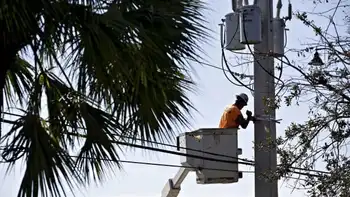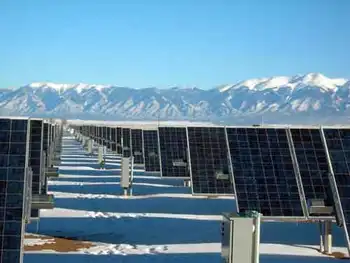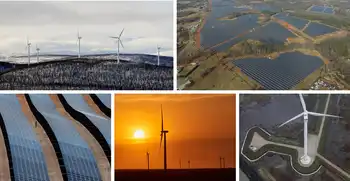Wind is in need of a bailout
By Investor's Business Daily
Substation Relay Protection Training
Our customized live online or in‑person group training can be delivered to your staff at your location.

- Live Online
- 12 hours Instructor-led
- Group Training Available
Yet in President-elect Obama's announcement of his energy team, we were told "the foundations of our energy independence" lie in "the power of wind and solar." Except that for these alternative sources there's been a severe power shortage.
After decades of tax credits and subsidies, wind provides only about 1% of our electricity. By comparison, coal provides 49%, natural gas 22%, nuclear power 19% and hydroelectric 7%.
Wind power is currently uncompetitive. As the Atlanta Journal-Constitution reported recently: "In 1999, 2001 and 2003, when Congress temporarily killed the credits, the number of new turbines dropped dramatically." These subsidies will be renewed in the new administration, but to "invest" in wind and solar to replace fossil fuels will be expensive.
A just-published study by the Texas Public Policy Foundation, "Texas Wind Energy: Past, Present and Future," says that to achieve even modest amounts of wind energy in that state alone would cost rate- and taxpayers at least $60 billion through 2025. That includes transmission costs, production costs, subsidies, tax breaks, economic disruption costs and grid management costs.
Europe, held up as a model of eco-friendly policies, is finding alternative energy to be an expensive and uneconomical proposition. According to estimates by the Rhine-Westphalia Institute for Economic Research, green subsidies will cost German electricity consumers nearly 27 billion euros in the next two years. Each of the 35,000 solar jobs in Germany is subsidized to the tune of 130,000 euros.
Meanwhile, nuclear power is making a comeback despite regulatory and environmental roadblocks, and little federal help. It is spending its own money to invest in clean energy for the future.
The hysteria after Three Mile Island, where no one suffered any harm, shut down the American nuclear power industry and caused our nuclear manufacturing base to atrophy. The overhyped event at Chernobyl was more an indictment of Russian technology than of nuclear power. Yet the damage was done.
Until recently, there was no domestic capacity to manufacture the huge components needed to build nuclear reactors. Global nuclear giant Areva and Northrop Grumman Shipbuilding are partnering to start building heavy nuclear components. The U.S. had very little enrichment capacity. Now, two new facilities are under construction, with two more planned.
"While visions of 'green jobs' dance in the heads of Washington bureaucrats," notes Jack Spencer of the Heritage Foundation. "The nuclear industry is creating thousands of high-skill, high-paying jobs."
Westinghouse, for one example, has already created more than 3,000 jobs and expects to add 2,900 for a development in Louisiana that will be used to construct modules for new nuclear plants.
Each new reactor will employ 1,400 to 1,800 people during construction, rising to as high as 2,400 jobs as the facility is built. During operation, a nuclear plant typically has a skilled work force of between 400 and 700 employees.
On cloudy and windless days, solar and wind are useless and require conventional power sources as backup. Output is not steady and cannot be increased on demand. You can't make the sun shine brighter or the wind blow harder during peak periods.
The Europeans and the Japanese long ago solved the problem of nuclear waste, reprocessing most of it into new fuel and safely storing what it can't, making nuclear power a renewable resource. It also removes billions of tons of greenhouse gases, waste that also finds its way into our lungs.
Nuclear power means jobs, clean air, energy independence and keeping money here at home.











